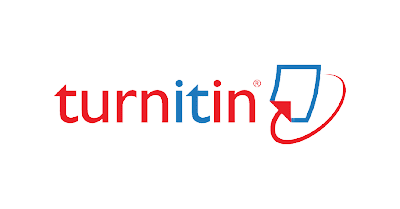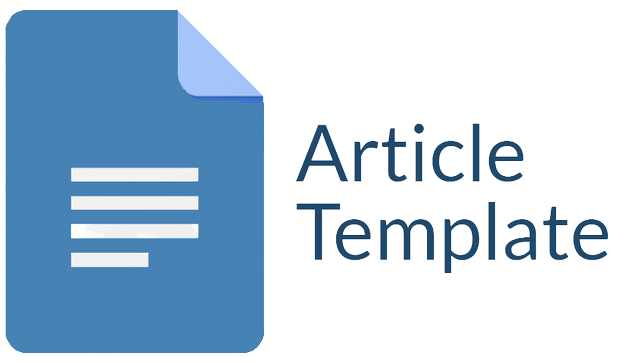PERANCANGAN DESAIN UI/UX APLIKASI PEMILIHAN ALAT FORENSIK DIGITAL MENGGUNAKAN METODE DESIGN THINKING
Abstract
Penelitian ini bertujuan untuk merancang aplikasi yang memfasilitasi pemilihan alat forensik digital. Dengan menerapkan prinsip desain UI/UX canggih dan metode Design Thinking, aplikasi ini diharapkan dapat memberikan informasi komprehensif serta rekomendasi yang disesuaikan dengan karakteristik kasus pengguna. Metode Design Thinking yang digunakan mencakup lima tahap: Empathize, Define, Ideate, Prototype, dan Test. Hasil penelitian menunjukkan bahwa aplikasi ini mampu meningkatkan efisiensi dan efektivitas proses pemilihan alat forensik digital, dengan menyediakan antarmuka yang intuitif dan fitur-fitur seperti filter pencarian dan rekomendasi berdasarkan kebutuhan spesifik. Pengujian menggunakan System Usability Scale (SUS) menunjukkan skor rata-rata 70,36, yang menandakan bahwa aplikasi ini memiliki tingkat kegunaan yang baik. Aplikasi ini diharapkan dapat memperkuat kapabilitas digital forensik dan membantu para profesional dalam melakukan investigasi yang lebih efektif.
Downloads
References
Ainurohmah, S., & Irianto, K. D. (2024). Desain Ui/Ux Telahouse: Aplikasi Otomatis Pengendalian Lampu Dan Suhu Untuk Lansia. Sains Dan Teknologi, 11(4), 2024–1762. https://doi.org/10.47668/edusaintek.v11i4.1315
Alkhalifi, Y., Rizal, K., Zumarniansyah, A., Sari Rahmadhani Fadillah, D., Pontianak Jl Abdul Rahman Saleh Bangka Belitung Laut, K., Pontianak Tenggara, K., Pontianak, K., & Barat, K. (n.d.). Metode Design Thinking Pada Sistem Informasi Presensi Pegawai Kejaksaan Negeri Kota Bogor. http://jurnal.bsi.ac.id/index.php/co-science
Ardiansyah, M. F., & Rosyani, P. (n.d.). Perancangan UI/UX Aplikasi Pengolahan Limbah Anorganik Menggunakan Metode Design Thinking.a https://journal.mediapublikasi.id/index.php/logic Arifandi. (n.d.).
Berni, A., & Borgianni, Y. (2021). From the definition of user experience to a framework to classify its applications in design. Proceedings of the Design Society, 1, 1627–1636. https://doi.org/10.1017/pds.2021.424
Brooke, J. (n.d.). SUS: A quick and dirty usability scale. https://www.researchgate.net/publication/228593520
Christo Lumban Tobing, B., Sulistiyowati, N., Studi Sistem Informasi, P., Ilmu Komputer, F., & Singaperbangsa Karawang, U. (n.d.). Perancangan Ulang Desain E-Campus Unsika Berdasarkan User Experience dengan Menggunakan Design Thinking.
Ernawati, S., & Rahayu, S. (2023). Analisa Usability Pada Aplikasi Identitas Kependudukan Digital Menggunakan Metode Usability Testing. BIOS : Jurnal Teknologi Informasi Dan Rekayasa Komputer, 5(1), 12–19. https://doi.org/10.37148/bios.v5i1.87
Ilham, H., Wijayanto, B., & Rahayu, S. P. (2021). Analysis And Design Of User Interface/User Experience With The Design Thinking Method In The Academic Information System Of Jenderal Soedirman University. Jurnal Teknik Informatika (Jutif), 2(1), 17–26. https://doi.org/10.20884/1.jutif.2021.2.1.30
Perancangan User Interface (UI) dan User Experience (UX) Website Manajemen Material Scaffolding Menggunakan Metode Pendekatan Design Thinking (Studi Kasus PT. Graha Mandala Sakti). (n.d.).
Purwanto, D., & Setyo Utomo, F. (n.d.). Implementasi Metode Design Thinking dalam Proses Perancangan Desain UI/UX Aplikasi “Rumah Tani.”
Ramadhani, E., Wahyuni, E. G., & Pratama, H. R. (2020). Design of expert system for tool selection in digital forensics investigation. IOP Conference Series: Materials Science and Engineering, 852(1). https://doi.org/10.1088/1757-899X/852/1/012137
Richard Rick Kiper, J., Richard, J., Advisor, leogov, Vandeven, S., & Richard Kiper, J. (2021). Pick a Tool, the Right Tool: Developing a Practical Typology for Selecting Digital Forensics Tools Pick a Tool, the Right Tool: Developing a Practical Typology for Selecting Digital Forensics Tools GIAC (GCFA) Gold Certification Pick a Tool, the Right Tool 2.
Rylander Eklund, A., Navarro Aguiar, U., & Amacker, A. (2022). Design thinking as sensemaking: Developing a pragmatist theory of practice to (re)introduce sensibility. Journal of Product Innovation Management, 39(1), 24–43. https://doi.org/10.1111/jpim.12604
Setya, H., Lituhayu, T., & Ramdani, C. (2024). Redesign Compro Kodegiri Dengan Metode Design Thinking: Studi Kasus Kodegiri. In Jurnal Ilmiah Sain dan Teknologi (Vol. 2, Issue 7).
Wimmer, H., Chen, L., & Narock, T. (2018). Ontologies and the Semantic Web for Digital Investigation Tool Selection. Journal of Digital Forensics, Security and Law. https://doi.org/10.15394/jdfsl.2018.1569
Copyright (c) 2024 Reyhandri Muhammad Naufal, Erika Ramadhani

This work is licensed under a Creative Commons Attribution-ShareAlike 4.0 International License.
Jurnal allows anyone to compose, correct, and do derivative works, even for commercial purposes, as long as they credit for the original work. This license is the freest. It is recommended for maximum distribution and use of licensed material.
The submitted paper is assumed not to contain any proprietary materials that are not protected by patent rights or patent applications; The responsibility for technical content and protection of proprietary materials rests with the authors and their organizations and not the responsibility of journal or its editorial staff. The primary (first/appropriate) author is responsible for ensuring that the article has been viewed and approved by all other authors. The author's responsibility is to obtain all necessary copyright waivers to use any copyrighted material in the manuscript before submission.
Jurnal Pendidikan, Sains dan Teknologi allows the author(s) to hold the copyright without restrictions and allow the author(s) to retain publishing rights without restrictions. Jurnal Pendidikan, Sains dan Teknologi CC-BY-SA or an equivalent license as the optimal license for the publication, distribution, use, and reuse of scholarly work. Jurnal Pendidikan, Sains dan Teknologi allows the author(s) to hold the copyright without restrictions and allow the author(s) to retain publishing rights without restrictions. Jurnal Pendidikan, Sains dan Teknologi CC-BY-SA or an equivalent license as the optimal license for the publication, distribution, use, and reuse of scholarly work.
In developing strategy and setting priorities Jurnal Pendidikan, Sains dan Teknologi recognize that free access is better than priced access, libre access is better than free access, and libre under CC-BY-SA or the equivalent is better than libre under more restrictive open licenses. We should achieve what we can when we can. We should not delay achieving free in order to achieve libre, and we should not stop with free when we can achieve libre.
Jurnal Pendidikan, Sains dan Teknologi is licensed under a Creative Commons Attribution-ShareAlike 4.0 International License.
You are free to:
- Share a copy and redistribute the material in any medium or format
- Adapt a remix, transform, and build upon the material for any purpose, even commercially.
- The licensor cannot revoke these freedoms as long as you follow the license terms.






